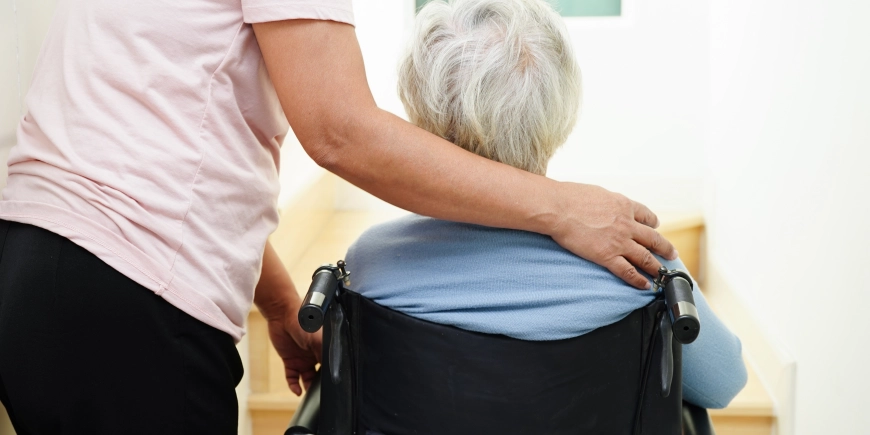Ready For Help at Home

I’ve been working with Joan for two years now, coaching her as she provides care to her spouse, Jeff, following a diagnosis of Primary Progressive Aphasia. With this condition, language ability progressively declines. Eventually, changes in memory, attention, judgment, behavior, and personality may also occur.
Recently, Joan said she was ready for some assistance at home, something I had suggested in previous conversations. We began by identifying what her objective was with this assistance, and then outlined the specific needs and wants from external care. The concept of a care plan was introduced, and we progressed from there.
Developing a Care Plan
Care plans have many definitions but basically, they help provide direction on care needs and serve as a two-way communication tool between caregivers. The term is common in healthcare settings, including hospitals, skilled nursing facilities, and homecare companies.
Typically, families are unaware of what a care plan is and the fact that, ideally, they should be participating in their development, no matter the setting. I encourage my clients to use the term so that they are speaking the same language as the professionals.
In Developing a Care Plan For Jeff, Our First Step Was to Outline Objectives…
Objective for Joan: To have 3–4 hours per day, during which she would have the freedom to conduct the business of life without having to worry about Jeff.
Objective For Jeff: To have a 3-4 hour daily routine, during which he would accomplish things without Joan’s assistance. From there, a basic care plan can be developed. It usually includes a summary of the following:
- An initial assessment that includes a diagnosis
- An identification of specific goals and care needs
- An outline of what needs to be done to manage the care needs and to achieve a specific outcome
- A means of reevaluation to see what needs to be changed
- Additionally, it includes demographic information such as name, date of birth, emergency contact, list of doctors, medical conditions, and a list of medications.
This was Joan’s first foray into asking for help, so I knew I needed to tread carefully and keep it simple, as well as allow for the expansion of services as needs grow. We worked together to develop a highly customized, written care plan that could be used to educate and train the individuals Joan would select.
Here Are Some of the Specifics:
Jeff is a 62-year-old man with a diagnosis of Primary Progressive Aphasia. He has difficulty with language and experiences frustration when he attempts to express himself. His short-term memory is impaired, and it is difficult for him to initiate and then complete complex tasks.
Goals and Care Needs: This is what I would like you to help Jeff accomplish in the 3-4 hours you are with him:
Engaging With Others:
- Achieving success with making his coffee utilizing the existing coffee maker and getting his breakfast utilizing the refrigerator and microwave;
- Achieving success with showering and dressing;
- Venturing outside of the condo to get some fresh air and exercise;
- Contributing to our time together by buying a few groceries on the way home that we can use for lunch or dinner.
Detailed Instructions Regarding What Needs to be Done to Achieve Those Goals:
- Place the water, coffee pod, and cup next to the coffee maker and cue Jeff to pour the water, insert the pod, place the cup, and press the button;
- When showering and dressing, lay out the towel, select his clothes, and lay them out in the bathroom next to the towel;
- Getting outside for fresh air and exercise included an “appointment” at Starbucks with the manager for a second cup of coffee and then picking up groceries on the way home utilizing a list Joan prepared.
Re-evaluation to See What Needs to be Changed:
Joan has a notebook in which the caregiver can provide a summary of his/her time with Jeff. This includes details regarding what they did together as well as Jeff’s mood. Although Joan was always back home before the caregiver left, she wanted a means of communication that would never include a discussion of Jeff in front of him, thus respecting his privacy and dignity.
Where to Find Help:
Joan had many creative ideas about where to seek help:
- Friends and family members who offered;
- Students attending a graduate program that was housed close by;
A person who was working with another resident in their building; - Homecare companies; She explored them all and settled on a caregiver from a local private homecare company that provided excellent care, five days per week. She also called upon a dear friend on an occasional weekend day.
Additional Documents:
I am happy to share that things have been going well for Joan and Jeff. Joan realizes this is the beginning and soon they will need more help. With that in mind, we have begun putting a few more things in place:
- A Grab n’ Go Kit
- An Emergency Procedure, in case anything happens while Joan is away
- A full-day schedule of Jeff’s routine
- A list of things Jeff enjoys doing, like a walk through a local museum, watching PBS programs about nature, and watching the Red Sox on TV
- A list of household responsibilities to keep Jeff’s space neat and clean, and other tasks that would be helpful if a caregiver had some down time while caring for Jeff
Summary:
As things evolve, Jeff’s care plan will require much more detail and include information about mobility, fall risk, communication strategies, and assistance with all activities of daily living.
But for now, Joan’s efforts are plenty to get them started and a great foundation upon which to build. Jeff adapted to someone new in their lives and Joan has the freedom to think clearly and to focus on something other than Jeff, even for just a few hours each day

